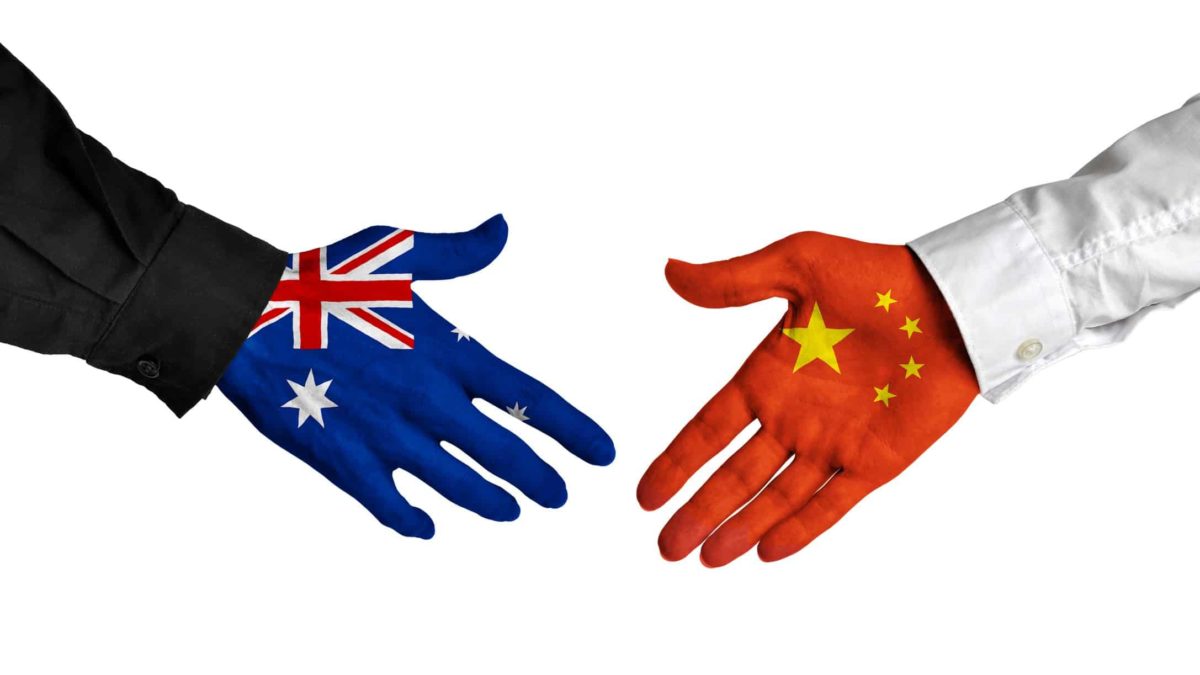Unfortunately several Australian industries have copped tariffs from China this year, devastating companies that rely on export income from the world's biggest population.
According to trade experts, Beijing is retaliating against Australia's calls for an investigation into the origins of COVID-19, attention on human rights cases in Xinjiang and condemnation on its suppression of free speech in Hong Kong.
"China seems determined to punish Australia and make it an example to other countries," Lowy Institute senior fellow Richard McGregor told Bloomberg last month.
"They want to show there's a cost for political disagreements."
The fortunes of Treasury Wine Estates Ltd (ASX: TWE) is the most prominent example. The Chinese Ministry of Commerce last month declared that Australian wines were being dumped into the country, to justify slapping a 169.3% deposit rate.
Treasury's share price, which had already sunk when China started its anti-dumping enquiry, plummeted.
Australian barley farmers are similarly feeling the pinch as a major export market instantly disappeared.
"The tariffs and trade restrictions introduced over the past year have pulled out the rug from beneath many Australian businesses, dissuading businesses from pursuing trade with China," said IBISWorld senior industry analyst Liam Harrison.
China knows it has leverage with these trade blocks, according to Harrison. The country is Australia's largest export partner, with 35.3% of goods and services heading there.
"Australian industries have invested heavily in expanding their trade with China since the China-Australia Free Trade Agreement was signed in December 2015."
Now IBISWorld has identified 5 other sectors China could target if tensions escalate.
Any ASX shares that are involved in these commodities would need to be evaluated with these risks in mind.
Dairy
Both the milk and cream processing sector and the milk powder industry are "highly vulnerable" to hefty Chinese tariffs.
ASX-listed companies like A2 Milk Company Ltd (ASX: A2M), Bega Cheese Ltd (ASX: BGA) and Keytone Dairy Corporation Ltd (ASX: KTD) could see their stock prices sink if that happened.
Harrison said slugging dairy would mean trade hostilities have stepped up to a very severe level.
"Australian dairy products are highly popular, and there are few substitute markets for baby formula that Chinese parents are willing to trust," he said.
"Action against this market would likely cause significant backlash from Chinese consumers, and could result in weakened support for continuing trade restrictions against Australia."
Australian baby powder exports skyrocketed during the COVID-19 pandemic, to reach 18,726 tonnes year-to-date to the end of September.
Honey
Australian honey is valued in Asian countries, especially the top-notch Manuka type.
China receives more than a quarter of Australia's exports, but the industry is vulnerable to a trade ban as other honey-producing nations are readily available.
Manuka honey comes from a type of tea tree that's only seen in New Zealand and south-east Australia, according to Harrison.
"The beekeeping industry in New Zealand would stand to benefit from reduced competition if China imposes tariffs on Australian honey," he said.
"For Chinese consumers, plentiful supply of cheaper honey would likely replace the lower availability of manuka products."
Fruit
According to IBISWorld, Australia's "citrus, nut and other fruit" industry sends more than 45% of its exports into China. More than 30% of total exports for apples, pears and stone fruits also head to the giant Asian nation.
"Fruit farmers across Australia have already suffered major setbacks, including sweltering heats early in the year, severe bushfires and now a shortage of fruit-pickers due to COVID-19 travel restrictions," said Harrison.
"Losing China as an export market could be devastating to an already weakened industry."
Companies like Costa Group Holdings Ltd (ASX: CGC) are involved in this area.
Pharmaceuticals
Australian medicines and supplements are popular in China, but the moat is very narrow.
"Our largest advantage in providing to this market is our relative geographic proximity," said Harrison.
"Many industry products have a range of alternative suppliers, such as the US, Canada and various markets across Europe, leaving the Australian industry particularly vulnerable to trade restrictions."
The local pharmaceutical industry derives more than 50% of its revenue from export markets.
Brands like Blackmores Limited (ASX: BKL) and Mayne Pharma Group Ltd (ASX: MYX) are exposed to a Chinese tariff escalation on pharmaceuticals.
Mining
If you own iron ore mining shares, you would never know China was picking on Australia at the moment. Prices for the metal have soared, and so have the stock prices.
Both iron ore and bauxite are heavily reliant on Chinese exports, but fortunately Australia has a thick moat with few competitors.
"Australian iron ore is very high quality, and there are currently few markets which can produce the quality, and particularly the quantity, of resources needed to fuel China's steel manufacturing industry," Harrison said.
"A recent downgrade in production by Brazilian producer Vale has also weakened China's potential for alternative markets for iron ore."









